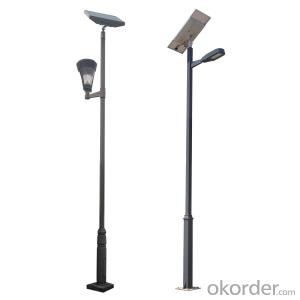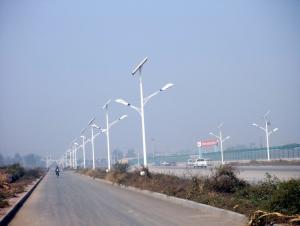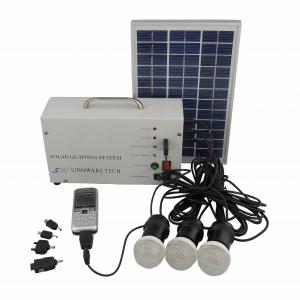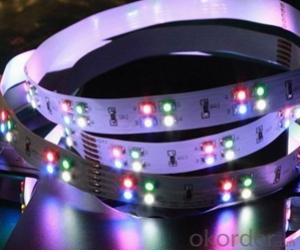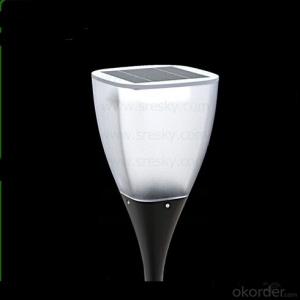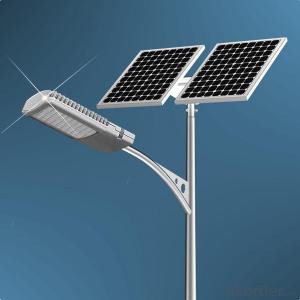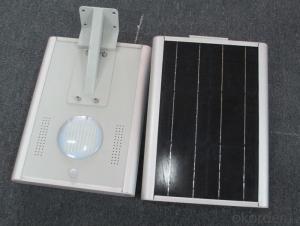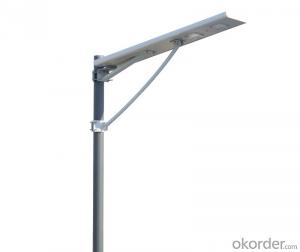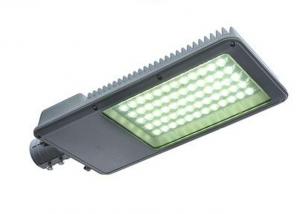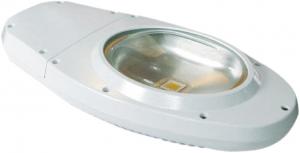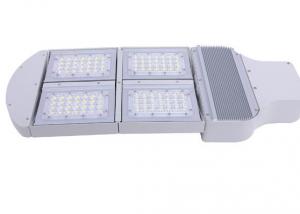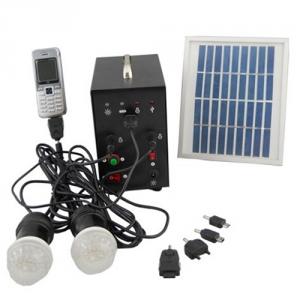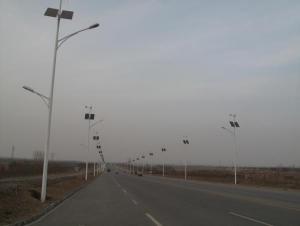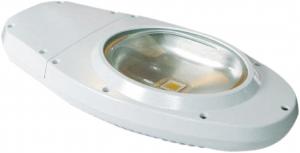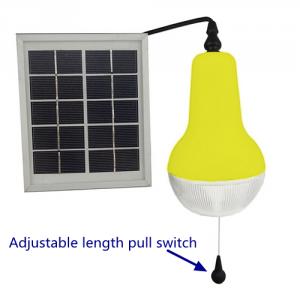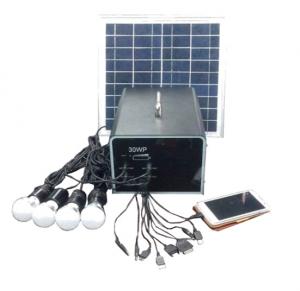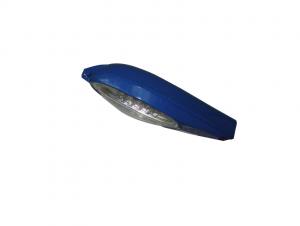Solar street lamps solar street light environmental friendly, cost saving, 600
- Loading Port:
- Ningbo
- Payment Terms:
- TT OR LC
- Min Order Qty:
- 1 set
- Supply Capability:
- 5000 set/month
OKorder Service Pledge
OKorder Financial Service
You Might Also Like
Step 1 – Find area in need of street lights
The first thing to figure out is the length of road in need of street lights. This can be a small entrance road only a couple hundred of feet long to miles of streets through an area. Does the area currently have any type of lighting available? What is the reason for needing street lights in this area?
Step 2 – Find out if electric is available
Is the electrical grid already nearby or would you need to call in the power company to bring in electrical lines? If the electric needs to be brought to the area, how much is this going to cost? Depending on how far the grid electric is from the location of the needed lighting, this can be quite expensive.
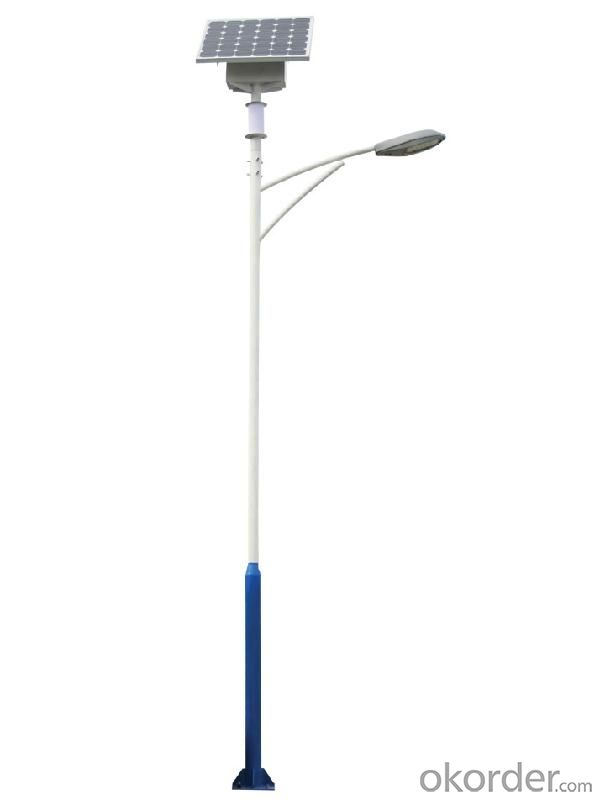
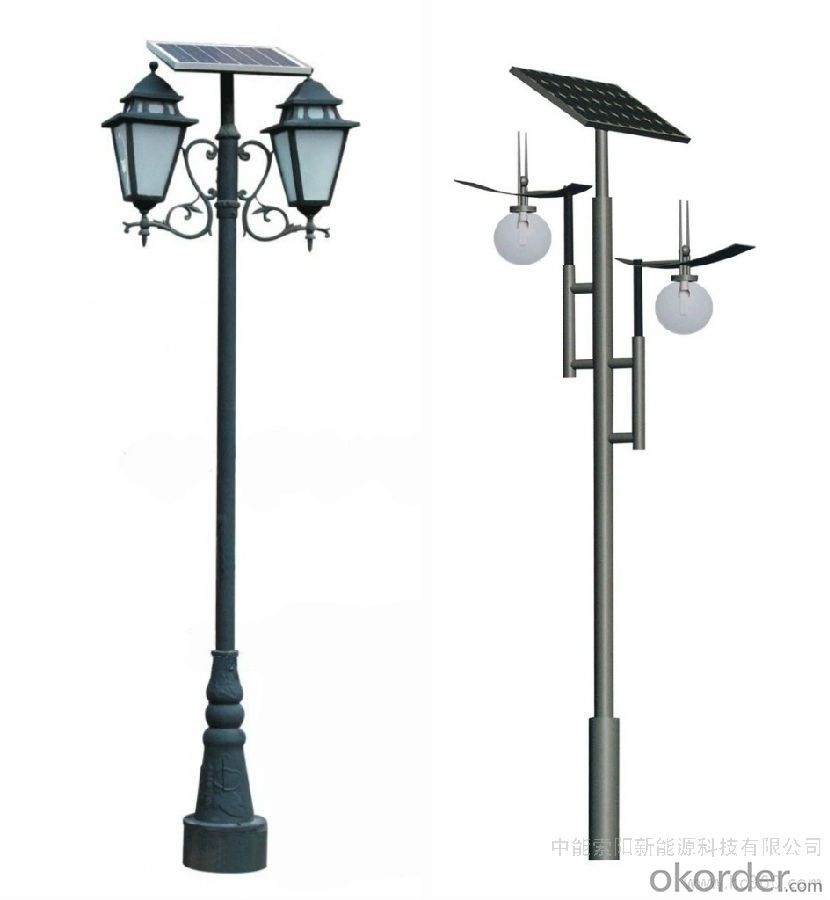
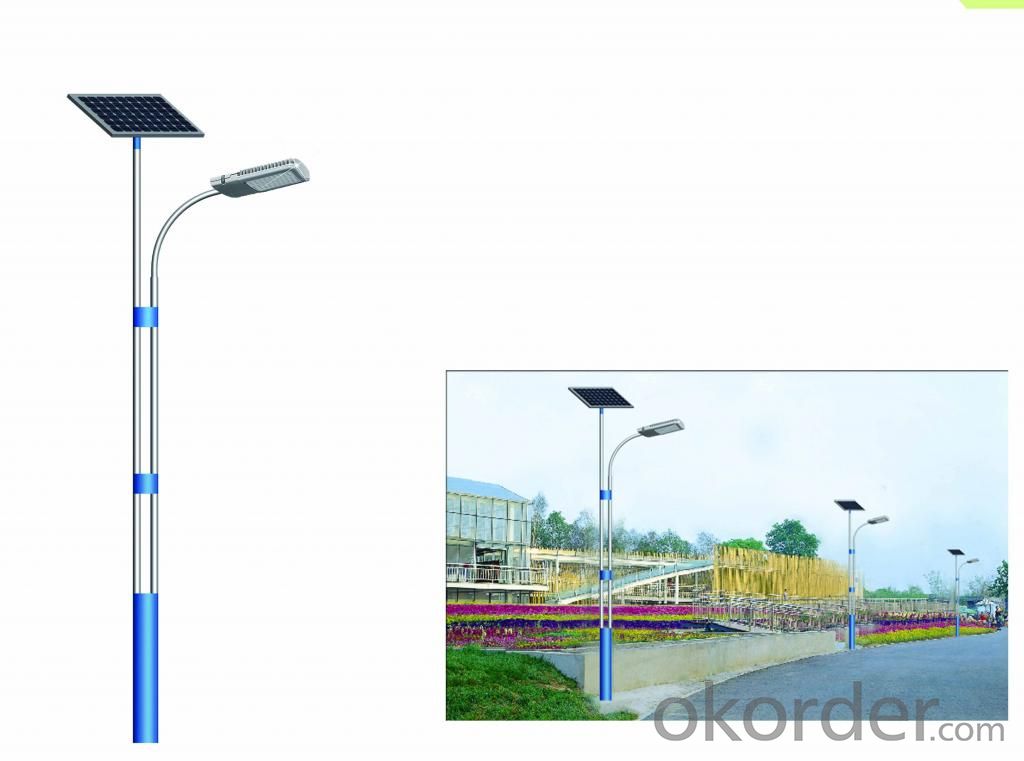
Step 3 – Determine the lighting requirements
How much lighting is needed on the street? Do the lights need to be dark sky compliant? Do the street lights need to run from dusk to dawn or for only a specified number of hours at night? Are the street lights able to dim in the middle of the night and still provide enough lighting? These questions need to be answered before you can decide on how many lights you will need to complete the project.
Step 4 – Find all alternatives
Solar power street lights are an option to traditional electrical lights. Solar street lights do not need the electrical grid to be brought in as they are self-contained units that provide their own provide the best lighting solution by using lower amounts of power, better optics, dimming features where needed, and cost less in an overall solution.
Step 5 – Contact companies for quotes
The last step after gathering the above information is to contact companies for quotes. Just like with anything else, get multiple quotes and weigh the pros and cons of every company and situation. The lowest quote is not always the best, so make sure to do your research on companies and products before you submit a purchase order.
If you take your time, do your research, and gather needed requirements, your next street lighting project will be a success. Never be afraid to ask a lot questions, they may save you time and money in the long run.
- Q:Can solar lights be used for public swimming pools or aquatic centers?
- Yes, solar lights can be used for public swimming pools or aquatic centers. Solar lights are a viable and eco-friendly option for illuminating outdoor areas, including swimming pools and aquatic centers. They harness solar energy during the day and use it to power the lights at night, eliminating the need for electricity and reducing operational costs. Additionally, solar lights are easy to install, require minimal maintenance, and can provide sufficient lighting for safety and ambiance in these public spaces.
- Q:Are there solar lights for outdoor bike paths or trails?
- Yes, there are solar lights specifically designed for outdoor bike paths or trails. These lights harness solar energy during the day and use it to illuminate the path or trail at night, providing safe and efficient lighting for cyclists and pedestrians.
- Q:Are solar lights resistant to animal or pet damage?
- Solar lights are typically built to endure outdoor conditions and possess some level of resistance against animal or pet harm. However, the degree of resistance may differ depending on the solar light's brand and model. Most solar lights are manufactured using robust materials like weather-resistant plastic or metal, enabling them to withstand minor encounters with animals or pets. Their design usually involves installation at an elevated height, making it less accessible to animals or pets and thereby reducing the risk of damage. Nevertheless, it's worth noting that certain animals, especially larger or more persistent ones, may still be capable of causing harm to solar lights. For instance, larger dogs may be able to chew on or topple solar lights within their reach. Similarly, some animals might be attracted to the lights and attempt to scratch or play with them, potentially resulting in damage. To minimize the chances of animal or pet damage, it is advisable to install solar lights in locations that are less easily reached by animals, such as high up on poles or walls. Furthermore, selecting solar lights with sturdy construction and ones that are specifically marketed as resistant to animal damage can also help mitigate potential issues. Overall, although solar lights are generally designed with resistance against animal or pet damage, it is important to evaluate the specific circumstances and take appropriate precautions to minimize any potential risks.
- Q:How do solar lights handle voltage drops or battery depletion?
- Solar lights are designed to handle voltage drops and battery depletion in a few different ways. Firstly, solar lights typically come equipped with a mechanism called a charge controller. The charge controller regulates the flow of energy from the solar panel to the battery, ensuring that the battery is not overcharged or depleted. In the event of a voltage drop, the charge controller will adjust the flow of energy to compensate for the decrease in voltage, ensuring that the battery remains charged and the light continues to function. Additionally, solar lights often come with built-in sensors that detect the battery level and adjust the light output accordingly. When the battery starts to deplete, the light may automatically dim to conserve energy and extend the runtime. This feature helps to prevent complete battery depletion and ensures that the light continues to operate even when the battery charge is low. Some solar lights also have a backup power source, such as a secondary battery or capacitor, which can provide temporary power during periods of low solar energy input or battery depletion. This backup power source helps to maintain the light's functionality until the battery is recharged or replaced. Overall, solar lights are designed to be efficient and resilient, with mechanisms in place to handle voltage drops and battery depletion. These features ensure that the lights remain functional and provide illumination even in less than ideal conditions.
- Q:Do solar lights have a warranty for their solar panels?
- Yes, solar lights typically come with a warranty for their solar panels. The exact terms and duration of the warranty may vary depending on the brand and model of the solar light. It is important to check the product specifications or contact the manufacturer for specific details regarding the warranty coverage.
- Q:Can solar lights be used for outdoor wedding lighting?
- Indeed, outdoor wedding lighting can certainly utilize solar lights. In fact, they present an exquisite option for imbuing your wedding venue with elegance and ambiance. Solar lights are effortlessly installed without the need for any wiring, making them highly convenient for outdoor events. Additionally, they possess energy efficiency and eco-friendliness, harnessing solar power to produce light. A variety of styles and designs are available for solar lights, including string lights, lanterns, and pathway lights, enabling you to craft your desired wedding atmosphere. Whether you desire to line the walkway, illuminate the reception area, or adorn the trees, solar lights offer a breathtaking and enchanting lighting solution for your outdoor wedding.
- Q:How do I dispose of old or damaged solar lights?
- To minimize the environmental impact when getting rid of old or damaged solar lights, it is crucial to adhere to appropriate procedures. Here are several measures you can undertake: 1. Assess repair potential: Prior to disposal, evaluate whether the solar lights can be fixed. Sometimes, a simple substitution of batteries or bulbs can restore their functionality. 2. Make contact with the manufacturer: Reach out to the manufacturer or the retailer from whom you bought the solar lights. Inquire about their take-back program or specific disposal instructions. Certain manufacturers may offer recycling services or provide guidance on proper disposal methods for their products. 3. Explore recycling alternatives: In case the manufacturer does not have a take-back program, explore recycling options available in your locality. Numerous cities and towns have recycling centers or electronic waste facilities that accept solar lights. Consult your local waste management authority or visit their website for information on drop-off locations and guidelines. 4. Separate the components: If the solar lights cannot be repaired or recycled as a whole, separate the various components. Remove batteries, solar panels, and electronic parts. These components may require separate disposal methods, such as taking batteries to battery recycling centers. 5. Dispose of appropriately: Once the components are separated, dispose of them according to local regulations. If specific guidelines are unavailable, dispose of them along with other electronic waste or at designated recycling centers. 6. Promote awareness: Raise awareness about proper disposal methods for solar lights. Share this information with friends, family, and neighbors, enabling them to responsibly dispose of their old or damaged solar lights as well. By adhering to these steps, you can ensure that your old or damaged solar lights are disposed of in an environmentally responsible manner, thereby minimizing any negative impact on the ecosystem.
- Q:Can solar lights be used to power other devices?
- Yes, solar lights can be used to power other devices. Many solar lights come with USB ports or built-in outlets that allow you to charge or power other devices such as smartphones, tablets, or small appliances. These solar lights typically have a built-in battery that stores the energy generated from the sun during the day, which can then be used to power other devices at night or when needed. Additionally, there are portable solar panels available that can be connected to solar lights or other devices, providing a separate power source for charging or powering them. So, whether it's charging your phone or running small electronic devices, solar lights can definitely be used to power other devices.
- Q:Do solar lights have built-in light sensors?
- Yes, solar lights typically have built-in light sensors that automatically turn the lights on at dusk and off at dawn, ensuring efficient use of solar energy.
- Q:Can solar lights be used for sports courts or athletic fields?
- Sports courts and athletic fields can indeed utilize solar lights. These lights serve as a cost-effective and eco-friendly alternative to traditional lighting setups. By harnessing solar energy and storing it in batteries, solar lights are capable of powering themselves during the night or when sunlight is lacking. The implementation of solar lights brings about numerous advantages for sports courts and athletic fields. Primarily, they eliminate the need for electrical wiring, making installation easier and more affordable. This also enables their installation in remote areas or places where accessing electricity may prove challenging. Moreover, solar lights offer flexibility by allowing easy adjustment or relocation to accommodate changing needs or events. They can be positioned at optimal angles to provide ideal lighting conditions for specific sports or activities, thereby improving visibility and safety. Furthermore, solar lights often have remote control capabilities, enabling convenient management and adjustment of lighting levels. Solar lights also yield significant cost savings in terms of energy bills. Since they operate independently from the electrical grid, they consume no electricity, leading to reduced ongoing operational expenses. Additionally, solar lights boast a longer lifespan compared to traditional lighting systems, resulting in decreased maintenance and replacement costs. All in all, solar lights constitute a viable and efficient lighting solution for sports courts and athletic fields. They offer ample illumination, lower energy costs, and have a minimal environmental impact, making them a sustainable choice for outdoor sports facilities.
1. Manufacturer Overview |
|
|---|---|
| Location | |
| Year Established | |
| Annual Output Value | |
| Main Markets | |
| Company Certifications | |
2. Manufacturer Certificates |
|
|---|---|
| a) Certification Name | |
| Range | |
| Reference | |
| Validity Period | |
3. Manufacturer Capability |
|
|---|---|
| a)Trade Capacity | |
| Nearest Port | |
| Export Percentage | |
| No.of Employees in Trade Department | |
| Language Spoken: | |
| b)Factory Information | |
| Factory Size: | |
| No. of Production Lines | |
| Contract Manufacturing | |
| Product Price Range | |
Send your message to us
Solar street lamps solar street light environmental friendly, cost saving, 600
- Loading Port:
- Ningbo
- Payment Terms:
- TT OR LC
- Min Order Qty:
- 1 set
- Supply Capability:
- 5000 set/month
OKorder Service Pledge
OKorder Financial Service
Similar products
New products
Hot products
Hot Searches
Related keywords
